Jazda na rolkach to świetny sposób na aktywność i naukę nowej umiejętności, ale początki mogą być trochę onieśmielające. Dobra wiadomość: opanowanie podstaw – takich jak start, zatrzymanie i skręcanie – nie musi być trudne. Oto, co musisz wiedzieć:
- Zabezpiecz się na start: Zawsze noś kask, ochraniacze na kolana, łokcie i nadgarstki. Chroni to podczas upadków (które, bądźmy szczerzy, się zdarzą).
- Ćwicz w odpowiednim miejscu: Wybieraj gładkie, płaskie powierzchnie, takie jak puste boiska czy lodowiska. Unikaj zatłoczonych lub nierównych terenów.
- Znajdź swoją równowagę: Lekko ugnij kolana, utrzymuj ciężar ciała na środku i patrz przed siebie – nie na stopy.
- Naucz się poruszać: Zacznij od techniki "V-Walk", a potem przejdź do płynnych ślizgów. Utrzymuj ruchy kontrolowane i stabilne.
- Proste zatrzymywanie: Wypróbuj techniki dla początkujących, takie jak T-stop czy Plow Stop, aby bezpiecznie zwolnić.
- Zakładanie kontroli podczas skrętu: Przenieś ciężar ciała i pochyl się w zakręt, zachowując stabilną postawę.
Konsekwencja to klucz! Ćwicz regularnie, skupiaj się na małych sukcesach i nie stresuj się upadkami – to część procesu. Z czasem poczujesz się pewnie i gotowy do jazdy. 😊
Wrotkarstwo dla początkujących - 5 najlepszych wskazówek, które musisz znać, aby zacząć
Sprzęt ochronny i przygotowanie
Dobrze dobrany sprzęt i prawidłowe ustawienie rolek mogą zdecydować o tym, czy sesja będzie zabawą, czy bolesnym upadkiem. Traktuj sprzęt ochronny jak swoją siatkę bezpieczeństwa – jest po to, by złapać cię, gdy coś pójdzie nie tak.
Wybór i dopasowanie sprzętu ochronnego
Twój kask to MVP sprzętu ochronnego. Musi dobrze przylegać, siedzieć nisko na czole i nie zasłaniać pola widzenia. Szukaj kasków specjalnie certyfikowanych do sportów rolkowych – są zaprojektowane, by wytrzymać uderzenia, z jakimi mierzą się rolkarze. Dobry kask powinien być stabilny, nie uciskając przy tym głowy.
"Dobrze dopasowany kask pomoże chronić twoją głowę i twarz w razie upadku." - Xino Sports
Ochraniacze na kolana i łokcie to kolejna linia obrony. Upadki się zdarzają, a te ochraniacze przyjmują na siebie uderzenia. Szukaj trwałych modeli z regulowanymi paskami, które nie będą się przesuwać podczas ruchu. Powinny całkowicie zakrywać stawy, ale pozwalać na naturalne zginanie i ruch. Marki takie jak Triple 8 i 187 Killer są popularne ze względu na połączenie komfortu i ochrony.
Ochraniacze na nadgarstki są niezbędne, bo prawda jest taka, że twój pierwszy odruch przy upadku to wyciągnięcie rąk. Wybierz ochraniacze z solidnymi szynami, które zapobiegną nadmiernemu zgięciu nadgarstków do tyłu. Powinny dobrze przylegać, ale pozwalać na swobodne poruszanie palcami.
Możesz kupić podstawowy zestaw sprzętu ochronnego za 30 do 60 dolarów, a kaski zwykle kosztują od 30 do 70 dolarów. Większy wydatek daje korzyści, takie jak lepsza wentylacja i większy komfort, ale nawet budżetowe opcje spełnią swoją rolę, jeśli dobrze pasują.
W marcu 2023 Bont Skates odnotowało 25% wzrost sprzedaży sprzętu ochronnego, dzięki większej liczbie początkujących, którzy stawiają na bezpieczeństwo. To mądry trend, pokazujący, że ludzie poważnie podchodzą do odpowiedzialnej jazdy.
Przygotowanie twoich rolek
Przed każdą sesją szybko sprawdź swoje kółka. Wiele nowych rolek ma nakrętki kółek zbyt mocno dokręcone, co z czasem może uszkodzić łożyska. Podnieś rolkę, pstryknij kołem i zobacz, jak się kręci. Powinno się swobodnie obracać bez chwiania. Jeśli jest zbyt ciasno, lekko poluzuj nakrętki. Jeśli koło się chwieje, dokręć je na tyle, by ustabilizować obrót.
Właściwie wyreguluj hamulce palcowe. W przypadku regulowanych hamulców wkręć je w płyty na co najmniej ½ cala. Początkujący często wolą je ustawić niżej dla lepszej równowagi. Jeśli twoje rolki mają stałe hamulce palcowe, upewnij się, że ich śruby są dobrze dokręcone, szybko sprawdzając je kluczem do rolek.
"Często rolki mają nakrętki zbyt mocno dokręcone. Upewnij się, że są na tyle luźne, aby gdy podniesiesz rolkę i pstrykasz kołem, to kręciło się swobodnie." - Lifehacker
Twoje trucki i kingpiny decydują o tym, jak twoje rolki radzą sobie na zakrętach. Delikatne poluzowanie kingpinów może ułatwić skręcanie, ale nie przesadzaj – zbyt luźne spowoduje utratę stabilności. Wprowadzaj małe korekty i testuj je, aż znajdziesz idealne ustawienie.
Gdy twoje rolki są gotowe, kolejnym krokiem jest znalezienie odpowiedniego miejsca do ćwiczeń.
Wybór bezpiecznego miejsca do ćwiczeń
Gładkie powierzchnie to najlepszy wybór na początek. Beton i asfalt sprawdzają się dobrze, ale unikaj nierównych lub popękanych miejsc, które mogą cię przewrócić. Kryte lodowiska są idealne dla początkujących – mają gładkie podłogi, ściany do trzymania się w razie potrzeby i przyjazną atmosferę do jazdy.
"Rolki to miejsce dla łyżwiarzy. To idealne miejsca do ćwiczeń i doskonalenia umiejętności jazdy, bo masz wszystko, czego potrzebujesz w jednym miejscu." - NattorkSkates
Puste boiska do koszykówki lub tenisa to także świetne opcje. Są gładkie, ogrodzone i zazwyczaj wolne od przeszkód. Bądź jednak uprzejmy – jeśli ktoś przyjdzie korzystać z boiska, czas się przenieść.
Trzymaj się z dala od zatłoczonych miejsc podczas nauki. Parki z dużym ruchem pieszych, zatłoczone chodniki czy ścieżki rowerowe mogą być przytłaczające, gdy dopiero uczysz się zatrzymywać i skręcać. Zamiast tego szukaj cichych parkingów, pustych boisk lub wyznaczonych stref do jazdy na rolkach.
Płaski teren to konieczność do budowania pewności siebie. Wzgórza i stoki mogą szybko wymknąć się spod kontroli, jeśli nie czujesz się jeszcze komfortowo z zatrzymywaniem się lub kontrolą prędkości. Te wyzwania zostaw na później, gdy opanujesz podstawy na równym terenie.
Również ważny jest timing. Wczesne poranki lub popołudnia w dni powszednie są zwykle spokojniejsze, dając więcej przestrzeni do ćwiczeń bez omijania ludzi czy poczucia skrępowania z powodu chwiejnych pierwszych kroków.
Podstawowa postawa i równowaga
Ustawienie odpowiedniej postawy to jak nauka jazdy na rowerze – gdy opanujesz podstawy, wszystko inne zaczyna się układać. To, jak ustawisz ciało na rolkach, decyduje, czy będziesz płynnie ślizgać się, czy spędzisz czas na chwianiu się i próbach nieupadania.
Znajdowanie właściwej postawy do jazdy na rolkach
Pomyśl o tym jak o siedzeniu na krześle, ale bez faktycznego siadania. Ten prosty trik pomaga naturalnie znaleźć właściwą postawę do jazdy na rolkach. Trzymaj kolana lekko zgięte – nie blokuj ich, ale też nie kucaj zbyt głęboko. Początkujący często słyszą "zginaj kolana" i kończą na zbyt głębokim kucaniu, co może obciążać kolana.
"Zginanie kolan do momentu, że kucasz, uszkodzi twoje kolana. Odblokowane i rozluźnione kolana to znacznie mniejszy stres dla kolan i pleców!" - Mickeymousetitdirt, entuzjasta jazdy na rolkach
Ustaw stopy na szerokość barków, aby mieć stabilną podstawę. Daje to elastyczność w przesuwaniu ciężaru bez utraty równowagi. Skup się na utrzymaniu ciężaru ciała na środku – nie pochylaj się zbytnio do przodu na palcach ani do tyłu na piętach. Celuj w ten idealny punkt, gdzie wszystko jest stabilne.
Pochyl się lekko do przodu od kostek, nie od talii. To niewielkie pochylenie do przodu pomaga przeciwdziałać tendencji do przewracania się do tyłu. Trzymaj klatkę piersiową uniesioną, ramiona rozluźnione, a kręgosłup w neutralnej pozycji – bez garbienia się do przodu czy wyginania do tyłu.
Patrz przed siebie, nie wlepiaj wzroku w stopy. To zmienia zasady gry w utrzymaniu równowagi. Skup wzrok na punkcie około 3 do 6 metrów przed sobą. To nie tylko pomaga w stabilności, ale także utrzymuje świadomość otoczenia.
"Trzymaj wzrok wysoko, nie patrz w dół ani na stopy. Dokąd idą oczy, tam idziesz." - sparksflyy13, członek społeczności rolkarzy
Pozwól ramionom swobodnie zwisać wzdłuż ciała, aby pomóc w utrzymaniu równowagi. Gdy opanujesz tę postawę, ćwicz jej utrzymywanie podczas stania w miejscu. To buduje równowagę potrzebną, gdy zaczniesz się poruszać.
Utrzymywanie stabilności podczas stania w miejscu
Stanie w miejscu na łyżwach jest trudniejsze, niż się wydaje. Gdy się toczysz, pęd pomaga utrzymać stabilność, ale gdy stoisz nieruchomo, kółka mogą się poruszać w nieoczekiwanych kierunkach. To często zaskakuje początkujących.
"Właściwie jest dużo łatwiej, gdy zaczynasz się poruszać, bo łyżwy mają tendencję do utrzymywania prostego toru. Gdy stoisz w miejscu, mogą iść w każdą stronę." - Andrew Silverman, emerytowany Principal PM, Azure Hardware Architecture, Microsoft
Zaangażuj mięśnie core, aby utrzymać równowagę. Nie chodzi o napinanie brzucha - raczej o lekkie aktywowanie głębokich mięśni core stabilizujących ciało. Pomyśl o core jak o wewnętrznej kotwicy.
Wypróbuj ćwiczenie kołysania, aby wzmocnić kostki i poprawić kontrolę. Delikatnie kołysz się do przodu na palcach, a potem do tyłu na piętach. To uczy kostki wykonywania drobnych korekt, które utrzymują Cię w pionie. Zacznij od małych ruchów i zwiększaj zakres, gdy poczujesz się pewniej.
"Trzymaj kolana ugięte, barki nad kolanami. Gdy poczujesz to dobrze, zacznij podnosić każdą łyżwę, utrzymując pozycję ciała." - Raymond Lincourt, księgowy i właściciel firmy
Ćwicz statyczne utrzymywanie równowagi przy ścianie lub poręczy dla wsparcia. Stań ze stopami na szerokość bioder i lekko ugiętymi kolanami. Na początku lekko opieraj się o ścianę dla równowagi, potem stopniowo zmniejszaj uchwyt, aż będziesz mógł stać bez trzymania się. Zacznij od 10 sekund i dąż do zwiększenia do 30 sekund lub więcej.
Unikaj blokowania kolan lub stania zbyt sztywno. Sztywność utrudnia szybkie dostosowanie się, gdy tracisz równowagę. Pozostań rozluźniony i gotowy do ruchu. Jeśli poczujesz napięcie, weź głęboki oddech i rozluźnij mięśnie.
Poświęcenie zaledwie 20 do 30 minut dziennie na te ćwiczenia równowagi może znacząco poprawić Twoją stabilność i pewność siebie. Solidne poczucie równowagi nie tylko pomaga zapobiegać upadkom, ale także stanowi podstawę do płynnych startów, zatrzymań i skrętów. Gdy opanujesz te statyczne ćwiczenia, będziesz gotowy, by zacząć swobodnie ślizgać się.
Jak zacząć się poruszać na rolkach
Więc opanowałeś stanie w miejscu – super! Teraz czas zrobić pierwszy krok i zacząć się poruszać. Jazda na rolkach może na początku wydawać się trochę straszna, ale z systematycznym podejściem i praktyką wkrótce będziesz śmigać jak zawodowiec. Gdy już nauczysz się poruszać, warto też nauczyć się bezpiecznie zatrzymywać (bo, bądźmy szczerzy, zatrzymanie jest równie ważne jak ruszanie).
Krok po kroku: technika V-Walk
V-Walk to podstawowa metoda dla początkujących. Oto jak działa: zacznij od ustawienia stóp w kształt litery V – palce powinny być skierowane na zewnątrz, a pięty prawie się stykać. Ta pozycja pomaga utrzymać równowagę i daje lepszą kontrolę.
Równo rozłóż ciężar ciała na obie stopy. Następnie przenieś ciężar na prawą stopę i wykonaj mały, stabilny krok do przodu lewą stopą. Ruchy wykonuj powoli i kontrolowanie, skupiając się na płynnym przenoszeniu ciężaru z jednej stopy na drugą.
Ćwicz tę technikę na płaskiej, wolnej od przeszkód powierzchni, takiej jak boisko do koszykówki, pusty parking lub tor rolkowy. Te miejsca są idealne do budowania pewności i równowagi, zanim spróbujesz dłuższych ślizgów.
Przejście od chodzenia do ślizgu
Gdy poczujesz się pewnie z V-Walk, czas dodać trochę ślizgu do swoich kroków. Zacznij od stopniowego wydłużania kroków. Gdy poczujesz się bardziej stabilny, lekko unieś tylną stopę i pozwól sobie ślizgać się do przodu. Używaj rąk, aby pomóc utrzymać równowagę.
"Kluczem do płynnego ślizgu jest utrzymanie rozluźnionej postawy i skupienie się na rozkładzie ciężaru ciała." - Polly Skates, instruktorka jazdy na rolkach
Trzymaj kolana lekko ugięte, a ciało rozluźnione. Na przemian wykonuj kilka kroków V-Walk i krótkich ślizgów. W miarę nabierania pewności wydłużaj ślizgi za każdym razem. Celem jest znalezienie rytmu, który będzie naturalny i stabilny.
Radzenie sobie z lękiem przed upadkiem
Bądźmy szczerzy – upadki to część nauki. Czujesz się zdenerwowany? To całkowicie normalne.
"Ćwiczenie upadków może pomóc oswoić ten lęk i zwiększyć ogólną pewność siebie na rolkach." - Skatefresh
Zacznij od ćwiczenia upadków w bezpieczny, kontrolowany sposób. Spróbuj najpierw na trawie lub dywanie, gdzie powierzchnia jest miększa, a potem przejdź do swojego zwykłego miejsca do jazdy. Jeśli poczujesz, że tracisz równowagę, unikaj odchylania się do tyłu. Zamiast tego ugnij kolana i pochyl się lekko do przodu. Upadek do przodu jest zazwyczaj bezpieczniejszy, ponieważ twoje ochraniacze – takie jak ochraniacze na nadgarstki i nakolanniki – są zaprojektowane, by amortyzować uderzenia.
Dla dodatkowego wsparcia ćwicz w pobliżu poręczy lub z partnerem do jazdy na rolkach. Ćwiczenia oddechowe, takie jak metoda 4-4-6 (wdech przez 4 sekundy, zatrzymanie oddechu na 4 sekundy, wydech przez 6 sekund), mogą również pomóc uspokoić nerwy przed rozpoczęciem jazdy.
sbb-itb-17ade95
Techniki zatrzymywania dla początkujących
Teraz, gdy już się toczysz, czas nauczyć się bezpiecznie zatrzymywać. Oto jak opanować dwie przyjazne dla początkujących techniki zatrzymywania oraz rozwiązywać typowe problemy.
Nauka T-Stop
T-stop zawdzięcza swoją nazwę kształtowi "T", jaki tworzą twoje stopy podczas zatrzymywania się. To prosty i skuteczny sposób na zwolnienie.
Oto jak to zrobić:
- Zacznij jeździć w łagodnym, kontrolowanym tempie na płaskiej, gładkiej powierzchni.
- Przenieś ciężar na dominującą stopę - tę, która jest dla ciebie najbardziej stabilna. Ta stopa utrzymuje ruch do przodu i pomaga zachować równowagę.
- Wyciągnij drugą stopę na bok i ustaw ją prostopadle do kierunku jazdy.
- Stopniowo przeciągaj koła wyciągniętej stopy po ziemi. To tworzy tarcie, które cię spowalnia.
Trzymaj kolana lekko ugięte i większość ciężaru na przedniej stopie. Ta postawa pomaga utrzymać równowagę podczas ciągnięcia drugiej stopy.
Spróbuj ćwiczyć T-stop w bezpiecznym, kontrolowanym miejscu, takim jak pusty parking lub boisko do koszykówki. Zacznij od wolnej prędkości, a gdy poczujesz się pewniej, spróbuj szybciej. Gdy opanujesz to na gładkich powierzchniach, możesz wyzwać się, próbując na różnych terenach.
Nauka Plow Stop
Plow Stop to kolejny przyjazny dla początkujących sposób na zatrzymanie się, szczególnie popularny ze względu na swoją prostotę.
Oto jak to działa:
- Zacznij toczyć się do przodu w wygodnym tempie.
- Poszerz rozstaw nóg, kierując palce do przodu dla lepszej równowagi.
- Głęboko ugnij kolana - stąd pochodzi siła hamowania.
- Naciskaj na zewnętrzną stronę pięt, tworząc tarcie między kołami a podłożem, aby zwolnić.
Podczas ćwiczeń możesz zauważyć, że twoje palce lekko skręcają się do środka pod koniec zatrzymania. To dobry znak - oznacza, że zaczynasz to opanowywać! Na przemian ćwicz T-stop i Plow Stop, aby zobaczyć, który sposób jest dla ciebie bardziej naturalny.
Naprawa typowych problemów z zatrzymywaniem się
Kiedy uczysz się zatrzymywać, normalne jest napotkanie kilku problemów. Oto jak poradzić sobie z niektórymi z najczęstszych trudności:
- Zbytnie poleganie na jednej stopie: Nadmierne obciążanie jednej stopy może powodować chwianie się lub nawet upadek. Aby to naprawić, ćwicz zatrzymanie typu T-stop obiema stopami i skup się na równomiernym rozłożeniu ciężaru podczas Plow Stop.
- Patrzenie na stopy: Kuszące jest patrzenie na stopy podczas zatrzymywania, ale może to zaburzyć równowagę. Trzymaj głowę uniesioną i patrz przed siebie. To nie tylko poprawi stabilność, ale także pomoże zauważyć przeszkody lub innych jeźdźców.
- Ustawienie kolan: Początkujący często blokują kolana na prosto lub zbyt nisko się kucają. Oba skrajne ustawienia mogą prowadzić do upadków. Trzymaj kolana rozluźnione i lekko ugięte dla lepszej kontroli i stabilności.
- Zatrzymywanie się przy różnych prędkościach: Jeśli ćwiczysz zatrzymywanie tylko przy jednej prędkości, możesz mieć problemy w rzeczywistych sytuacjach. Zacznij powoli, a potem stopniowo zwiększaj prędkość. To pomoże Ci ocenić, ile nacisku i czasu potrzebujesz, by bezpiecznie się zatrzymać.
Skręcanie i kierowanie z kontrolą
Teraz, gdy opanowałeś podstawy zatrzymywania się, czas zanurzyć się w skręcanie – kluczową umiejętność do omijania przeszkód i zmiany kierunku z łatwością. Gdy poczujesz się pewnie w zatrzymywaniu, skręcanie stanie się Twoim kolejnym krokiem do płynnej i kontrolowanej jazdy.
Podstawowa technika skręcania
Skuteczne skręcanie polega na przesunięciu ciężaru i pochyleniu się w łuk – nie trzeba podnosić łyżew! Zacznij od solidnej postawy: lekko ugnij kolana i ustaw stopy na szerokość barków. Aby skręcić w prawo, pochyl ciało w prawo, przesuwając ciężar na zewnętrzną krawędź prawej łyżwy. Obie stopy powinny współpracować, prowadząc zakręt.
"Aby skutecznie skręcać, początkujący powinni skupić się na przesuwaniu ciężaru ciała i używaniu krawędzi swoich łyżew. Na przykład, skręcając w prawo, obie stopy powinny się pochylić w prawo, angażując zewnętrzną krawędź prawej łyżwy."
Twoje ramiona również mogą pomóc w kierowaniu ruchem. Spróbuj wskazać zewnętrzną ręką kierunek, w którym chcesz jechać – to jak delikatne popchnięcie ciała, by podążało za ruchem. Patrz przed siebie i napnij mięśnie core, aby zwiększyć stabilność podczas pochylania się w zakręcie.
Gdy opanujesz podstawy, ćwicz kontrolowane zakręty, aby zbudować konsekwencję.
Ćwiczenie kontrolowanych zakrętów
Znajdź bezpieczne, płaskie miejsce do ćwiczeń – pusty parking lub boisko do koszykówki świetnie się sprawdzą. Zacznij powoli i skup się na tworzeniu płynnych, szerokich łuków. Użyj techniki przypominającej nożyce, ustawiając jedną stopę nieco przed drugą, aby utrzymać równowagę. Ustaw pachołki lub znaczniki, aby ćwiczyć zakręty w obu kierunkach, co pomoże Ci wyrobić pamięć mięśniową i pewność siebie.
Przejście do ostrych zakrętów
Gdy poczujesz się pewnie z łagodnymi łukami, czas przejść do ostrzejszych zakrętów. Stopniowo zwiększaj pochylenie, utrzymując stabilną postawę. Przy ciasniejszych zakrętach bardziej ugnij kolana i obniż środek ciężkości – ta dodatkowa stabilność robi ogromną różnicę.
"Zginanie kolan i przesuwanie ciężaru ciała jest kluczowe dla utrzymania stabilności podczas skręcania."
Zanim zaczniesz wykonywać agresywne skręty, upewnij się, że umiesz dobrze się zatrzymywać – przyda się to, gdy coś niespodziewanego się wydarzy. Dzięki regularnym ćwiczeniom zyskasz kontrolę i pewność, by radzić sobie z ostrymi zakrętami i poruszać się po każdej trasie jak profesjonalista.
Budowanie pewności siebie i dalszy rozwój
Teraz, gdy opanowałeś podstawy – start, zatrzymywanie się i skręcanie – czas skupić się na budowaniu pewności siebie. Sekret lepszego rolkarza? Konsekwencja. Nie chodzi o perfekcję od razu; chodzi o regularne pojawianie się, ćwiczenie i świętowanie każdego, nawet najmniejszego sukcesu po drodze.
Jeśli chodzi o poprawę umiejętności jazdy na rolkach, systematyczna praktyka to podstawa. Staraj się ćwiczyć co najmniej trzy razy w tygodniu przez około 30 minut. Ta regularność pomaga mięśniom zapamiętać ruchy i buduje pewność siebie z każdą sesją. Z czasem te stałe wysiłki sprawią, że zaawansowane ruchy będą naturalne.
Wyznaczanie jasnych celów i śledzenie postępów może uczynić trening jeszcze skuteczniejszym. Spróbuj stawiać sobie małe wyzwania podczas każdej sesji. Może w jednym tygodniu skupisz się na opanowaniu T-stopu, a w następnym na płynniejszych skrętach. Możesz też wymyślić zabawne mini cele, jak przejechanie określonego dystansu lub slalom między pachołkami. Prowadzenie dziennika jazdy to kolejny świetny sposób na śledzenie postępów – to bardzo motywujące, gdy możesz spojrzeć wstecz i zobaczyć, jak daleko zaszedłeś.
Naucz się bezpiecznie upadać. Tak, upadki to część drogi, a każdy rolkarz przez to przechodził – na początku chwiejny i niepewny. Ćwiczenie upadania na ochraniacze na kolana i nadgarstki może zrobić ogromną różnicę. Nie tylko zmniejsza strach przed upadkiem, ale także buduje zaufanie do sprzętu ochronnego. Zmiana myślenia z „Nie mogę upaść” na „Wiem, jak bezpiecznie upaść” to prawdziwa rewolucja.
Nie zapominaj świętować małych sukcesów. Może dziś przejechałeś kilka dodatkowych metrów albo w końcu opanowałeś płynny skręt. Te drobne zwycięstwa są równie ważne jak wielkie kamienie milowe. Poza tym jazda na rolkach to nie tylko umiejętności – to także świetny trening, który poprawia kondycję i wzmacnia mięśnie.
Kolejna wskazówka? Nawiąż kontakt z innymi rolkarzami. Dołączenie do lokalnych grup rolkarskich lub nawet nagrywanie swoich treningów może pomóc Ci utrzymać motywację. Dzielenie się postępami i uczenie się od innych sprawia, że zabawa trwa, a także buduje poczucie wspólnoty.
Najczęściej zadawane pytania
Jak pokonać strach przed upadkiem podczas nauki jazdy na rolkach?
Upadki to naturalna część nauki jazdy na rolkach – to właśnie dzięki nim rozwijasz się i stajesz lepszy. Zamiast się ich obawiać, traktuj każdy upadek jak krok w stronę opanowania swoich umiejętności. Pewność siebie nie pojawia się z dnia na dzień, ale dzięki systematycznej praktyce, powolnemu startowi i skupieniu na równowadze, zauważysz postępy i będziesz gotowy, by przekraczać swoje granice.
Noszenie odpowiedniego sprzętu ochronnego – takiego jak kask, ochraniacze na kolana, łokcie i nadgarstki – daje spokój ducha i pomaga chronić przed urazami. Świetna wskazówka? Ćwicz celowe upadki na miękkich powierzchniach. To pomaga nauczyć się bezpiecznie upadać i kontrolować odbicie. Zachowaj pozytywne nastawienie, zaakceptuj drobne potknięcia, a zanim się obejrzysz, będziesz jeździć z pewnością siebie!
Jak mogę poprawić równowagę i stabilność na rolkach jako początkujący?
Aby poprawić równowagę i stabilność na rolkach, zacznij od prostych ćwiczeń skupiających się na wzmacnianiu mięśni core i koordynacji. Dobrym pierwszym krokiem jest po prostu stanie w miejscu na rolkach. Trzymaj kolana lekko ugięte i rozłóż równomiernie ciężar na obie stopy. To pomoże ci przyzwyczaić się do uczucia rolek pod stopami.
Gdy już poczujesz się pewnie stojąc, przejdź do powolnych, kontrolowanych ruchów. Spróbuj ślizgać się po linii prostej lub delikatnie przenosić ciężar z jednej stopy na drugą. Te proste ćwiczenia angażują mięśnie i pomagają zbudować pamięć mięśniową z czasem. Wytrwaj, a nie tylko poczujesz się pewniej, ale też będziesz gotowy na bardziej zaawansowane triki na rolkach.
Jak mogę utrzymać i wyregulować moje rolki, aby jazda była płynna?
Chcesz, aby twoje rolki śmigały jak marzenie? Sekret tkwi w regularnej pielęgnacji. Oto jak utrzymać je w doskonałej formie:
- Sprawdź zużycie: Zwróć szczególną uwagę na kółka, łożyska i hamulce. Te części najbardziej cierpią podczas twoich przygód na rolkach i wymagają najwięcej troski.
- Wyczyść kółka i łożyska: Brud i zanieczyszczenia mogą zakłócić jazdę. Regularnie je przecieraj i upewnij się, że kółka swobodnie się obracają.
- Wyreguluj trucki: Dokręć lub poluzuj śruby, aby znaleźć idealny balans między stabilnością a zwrotnością. Niezależnie czy wolisz bardziej sztywne czy luźniejsze ustawienie, wszystko zależy od twoich preferencji.
- Zabezpiecz wszystkie części: Sprawdź, czy nakrętki, śruby i hamulce są dobrze dokręcone. Luźne elementy mogą zaburzyć równowagę lub nawet spowodować wypadki.
- Przetrzyj rolki: Użyj wilgotnej szmatki, aby usunąć brud, ale trzymaj wodę z dala od łożysk – nie lubią wilgoci.
- Umyj wyjmowane wkładki: Jeśli twoje rolki mają wkładki, wrzuć je do prania, gdy zajdzie taka potrzeba. Pozwól im całkowicie wyschnąć na powietrzu, zanim włożysz je z powrotem.
Trochę troski robi wielką różnicę. Dbanie o swoje rolki nie tylko zapewnia płynną jazdę, ale także sprawia, że sesje na rolkach są bezpieczniejsze i o wiele bardziej zabawne!







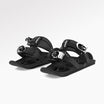













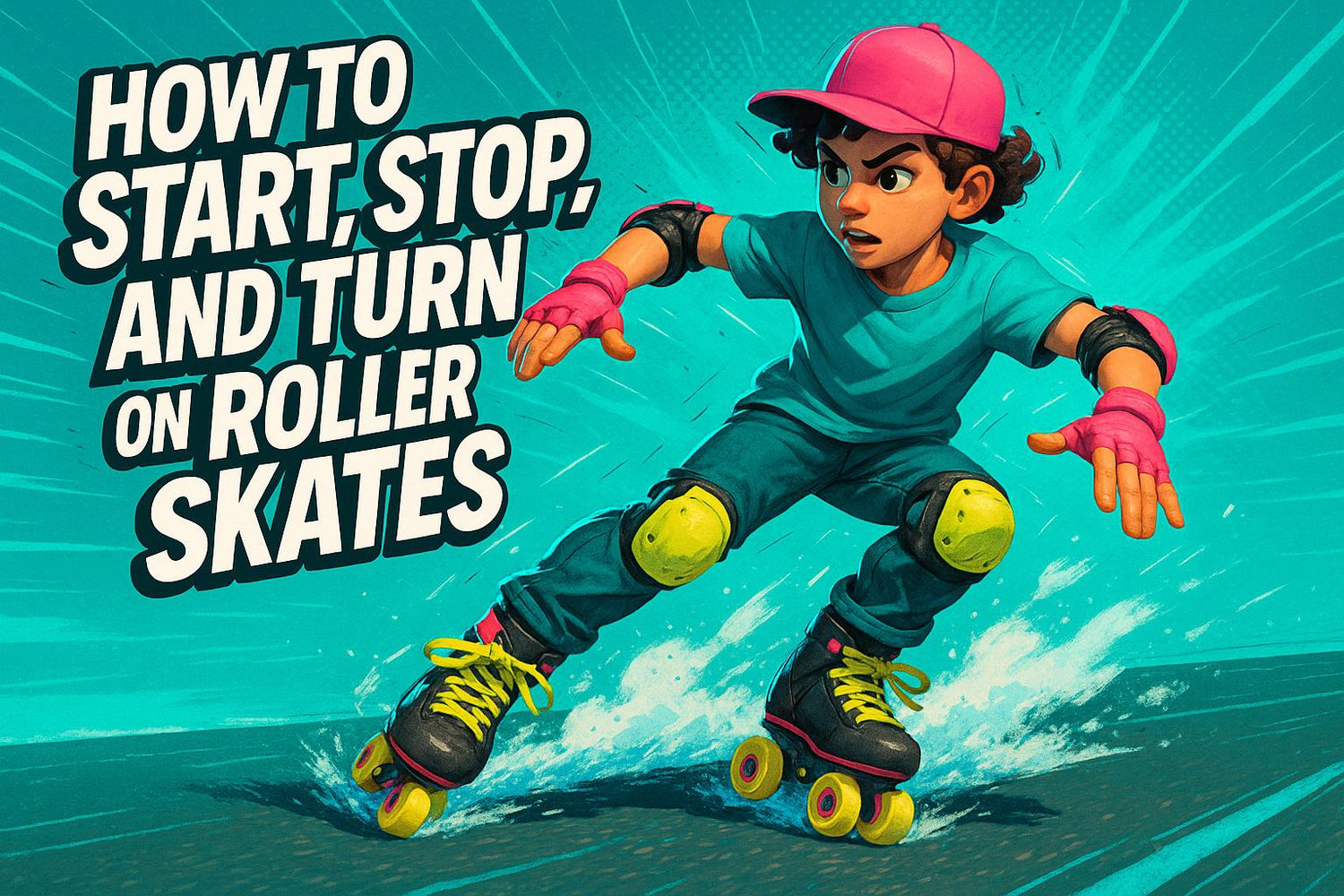
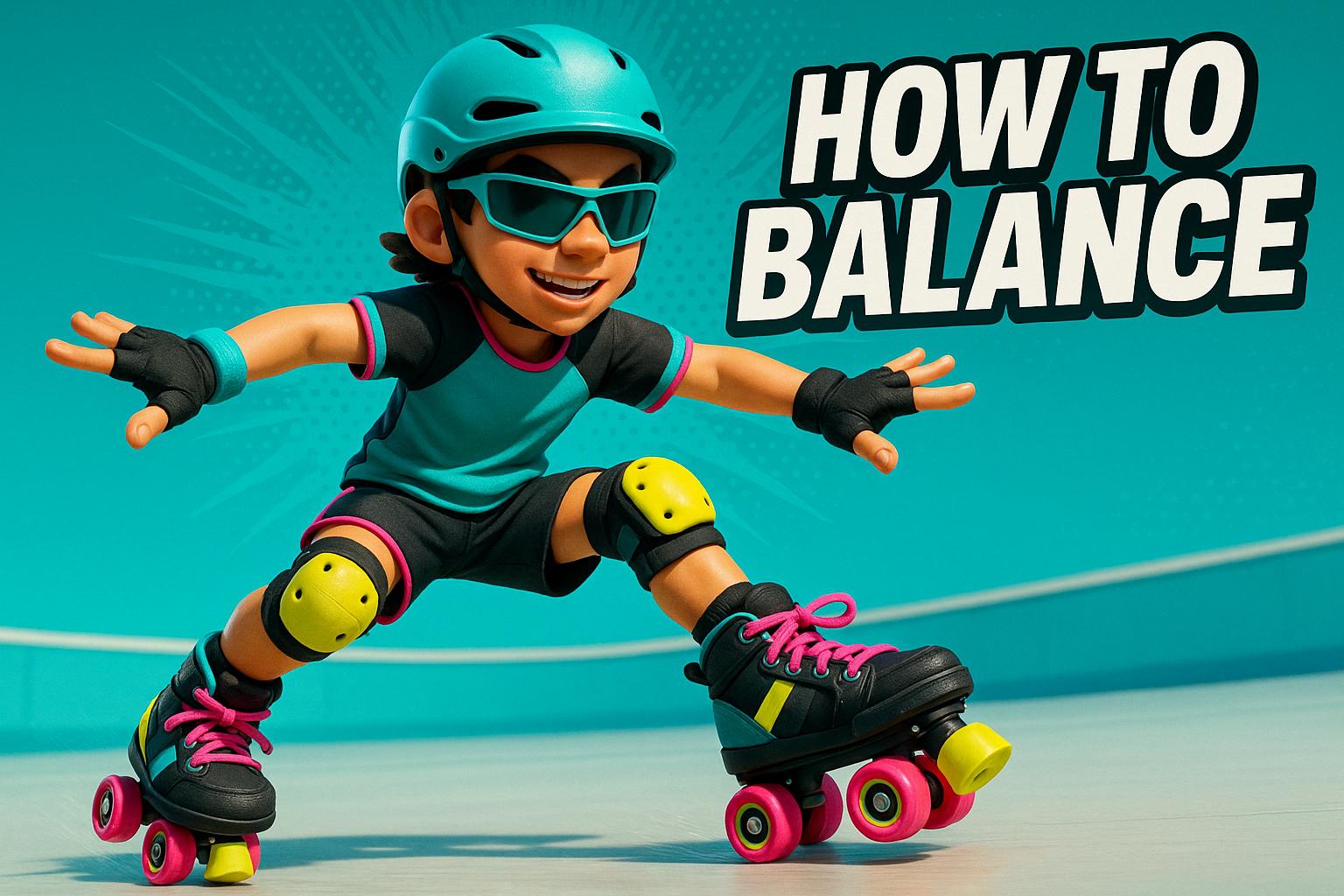
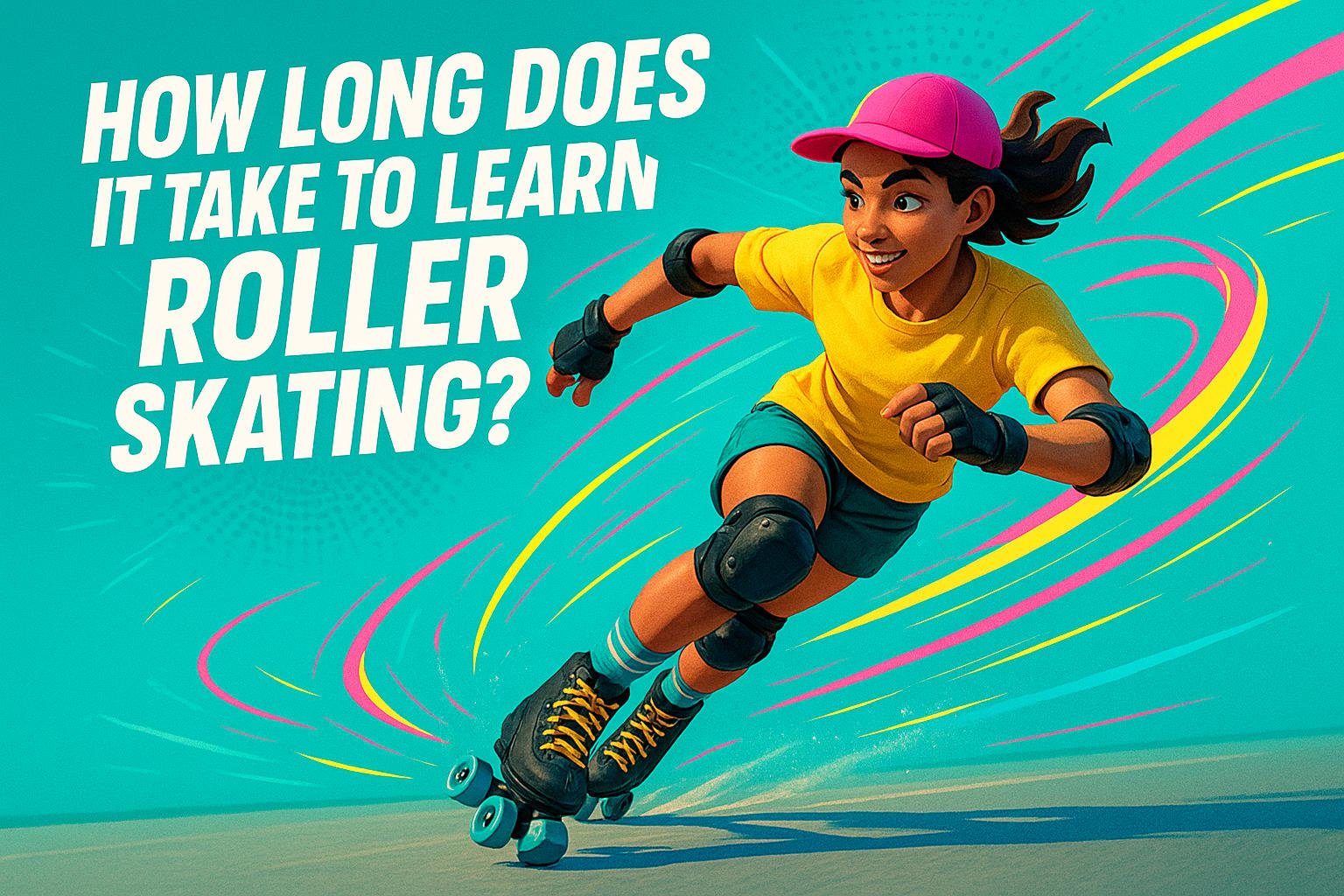




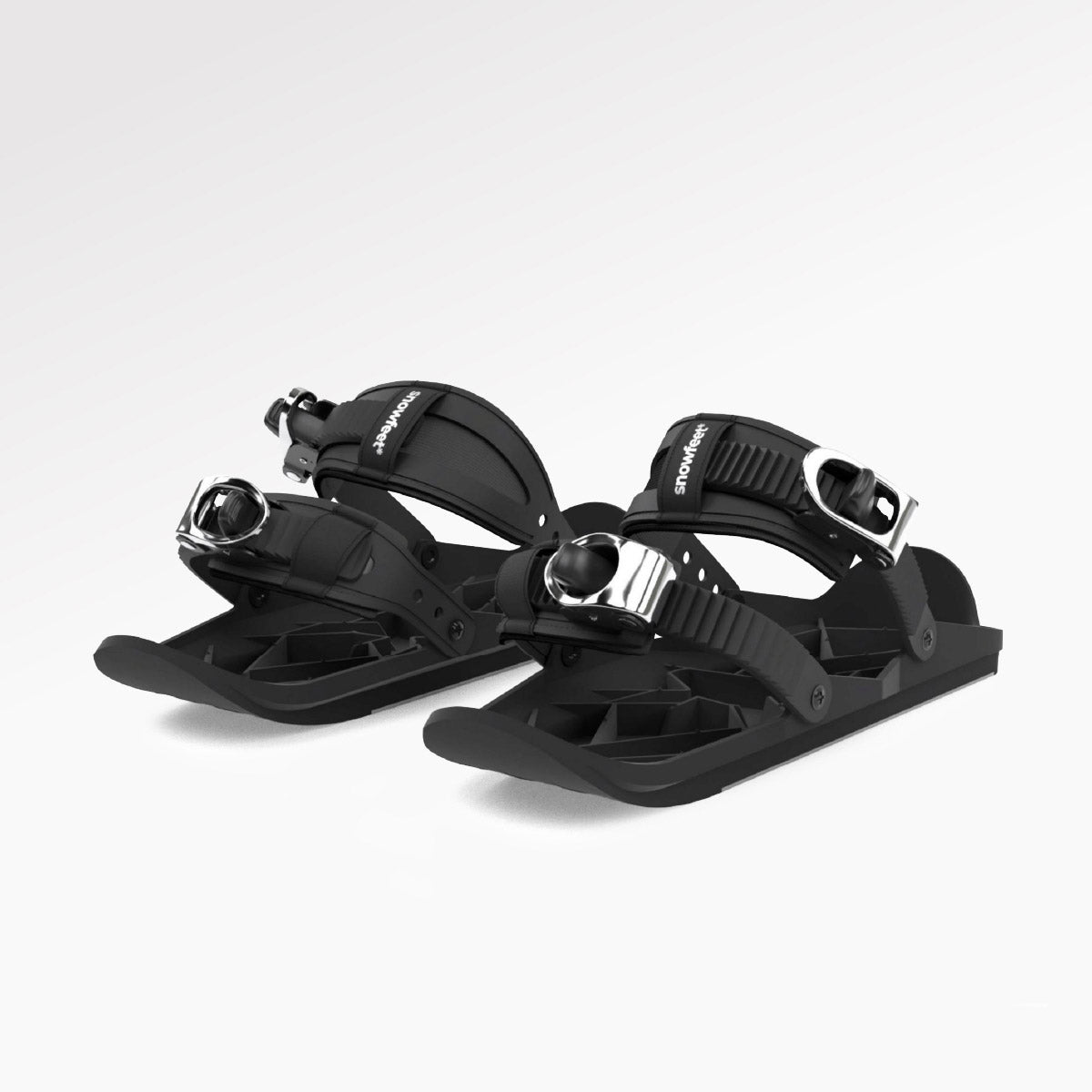
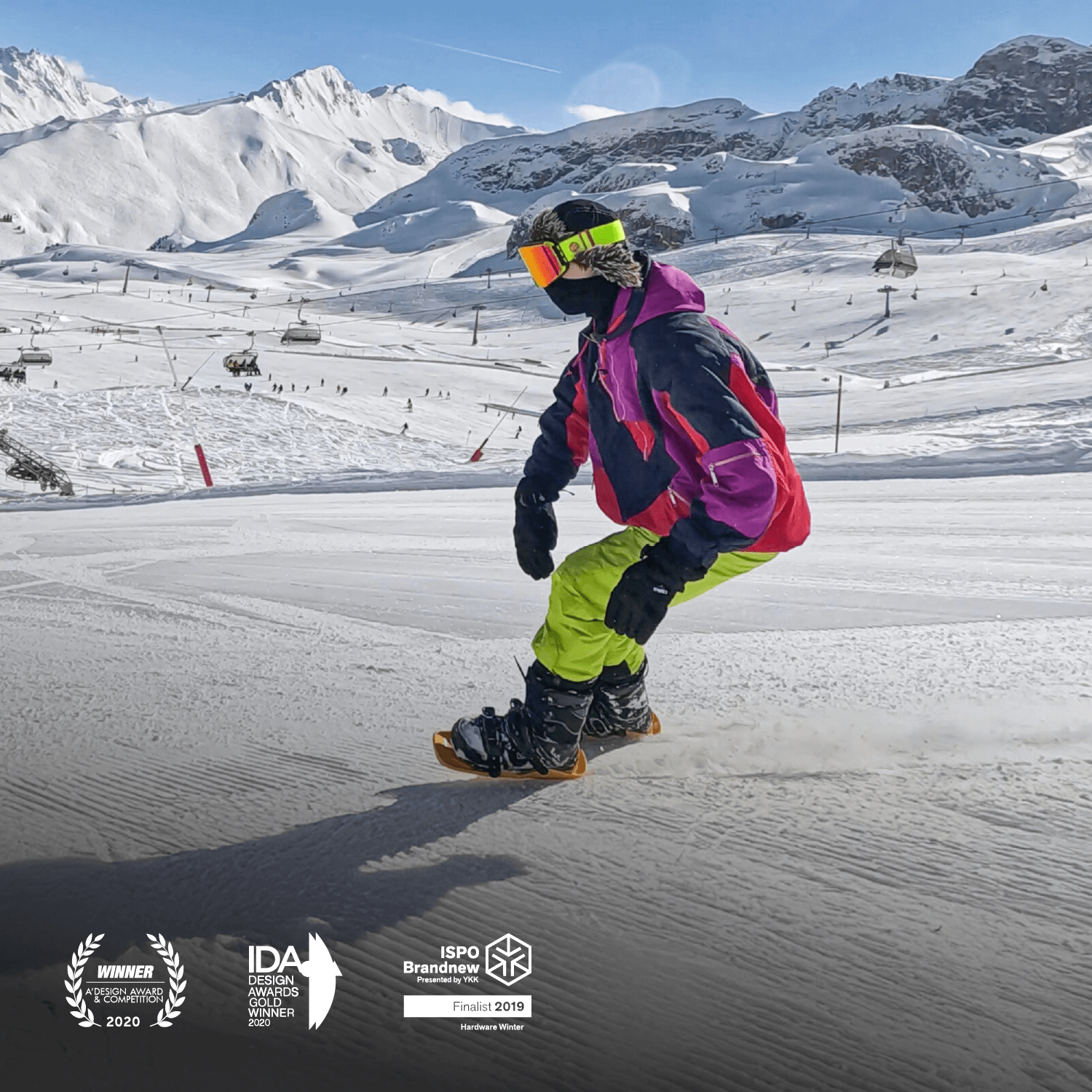




Zostaw komentarz
Ta strona jest chroniona przez hCaptcha i obowiązują na niej Polityka prywatności i Warunki korzystania z usługi serwisu hCaptcha.